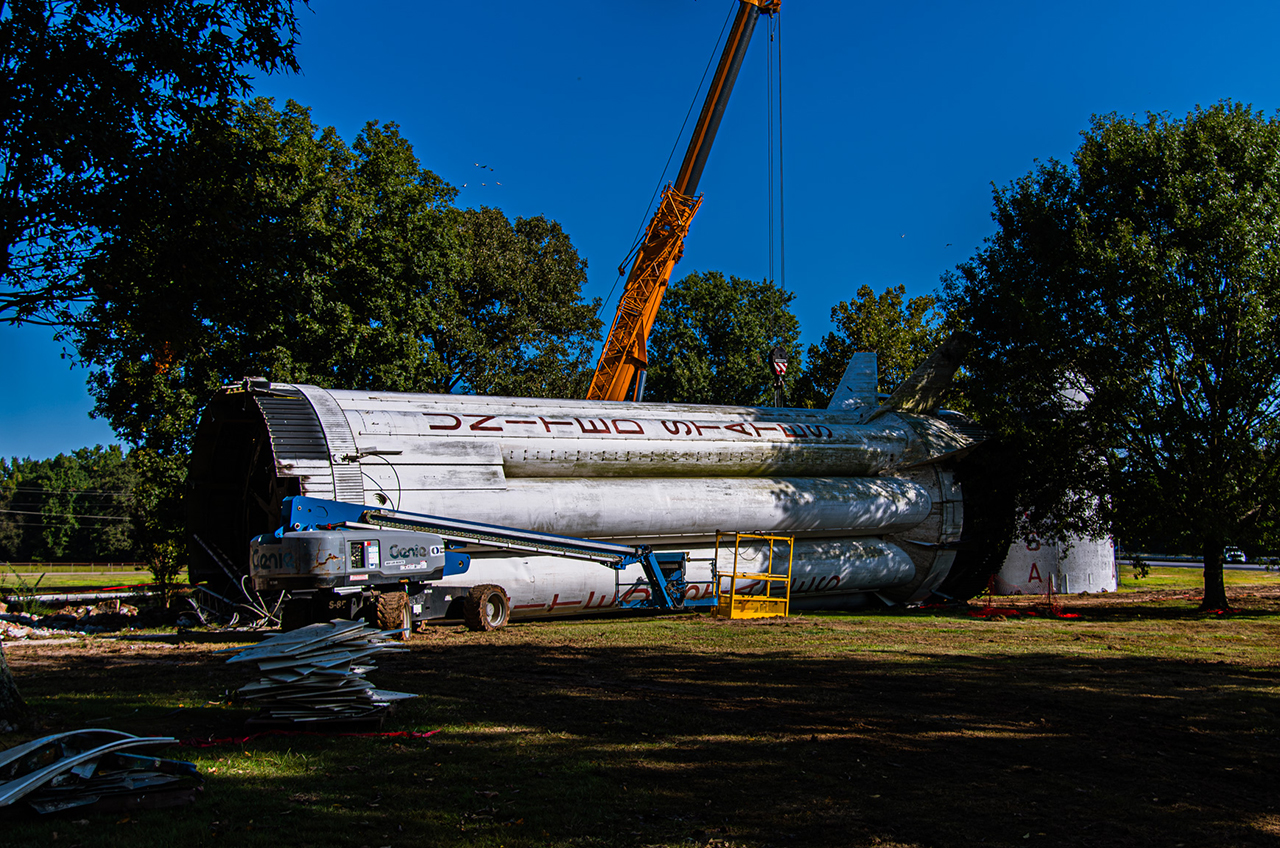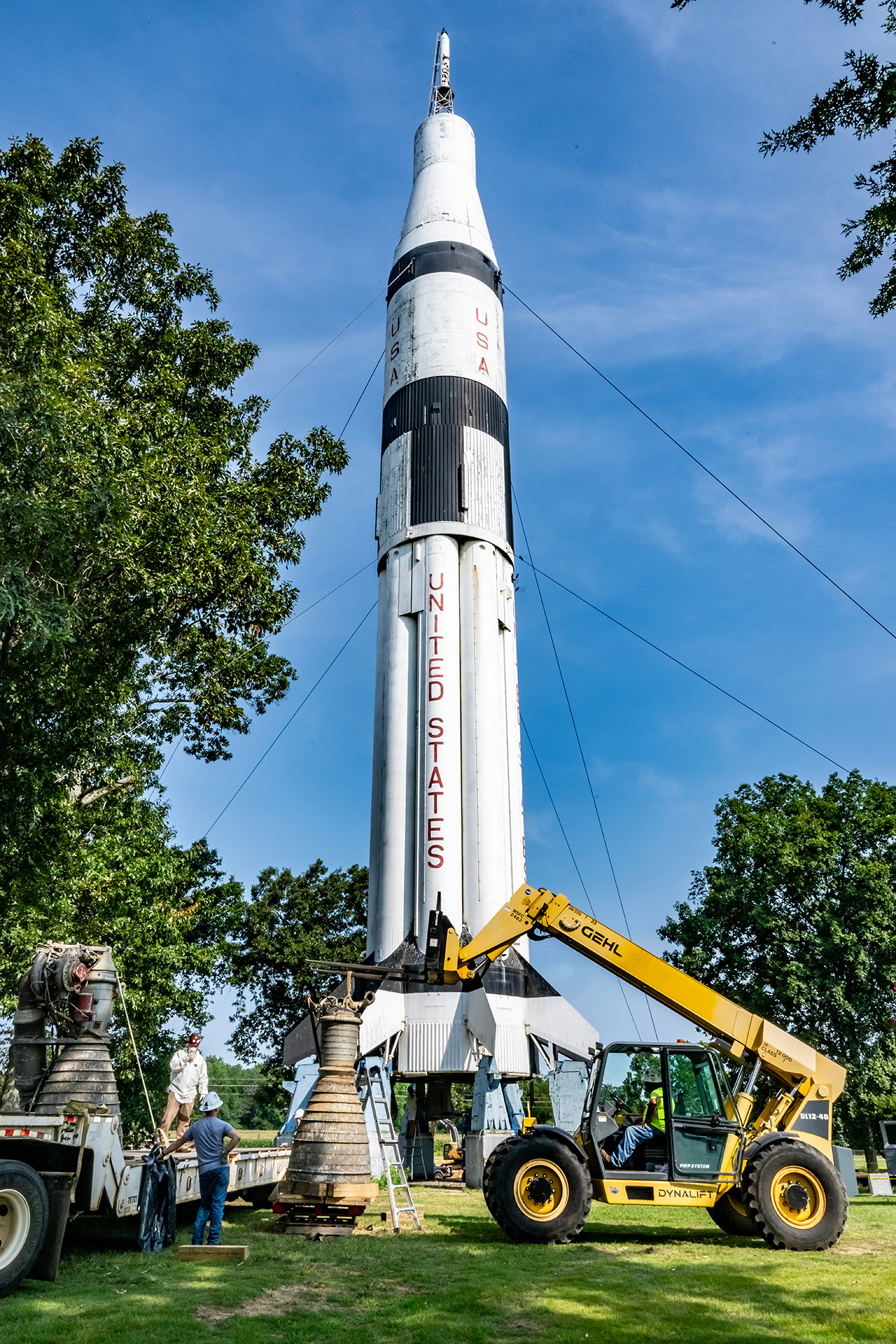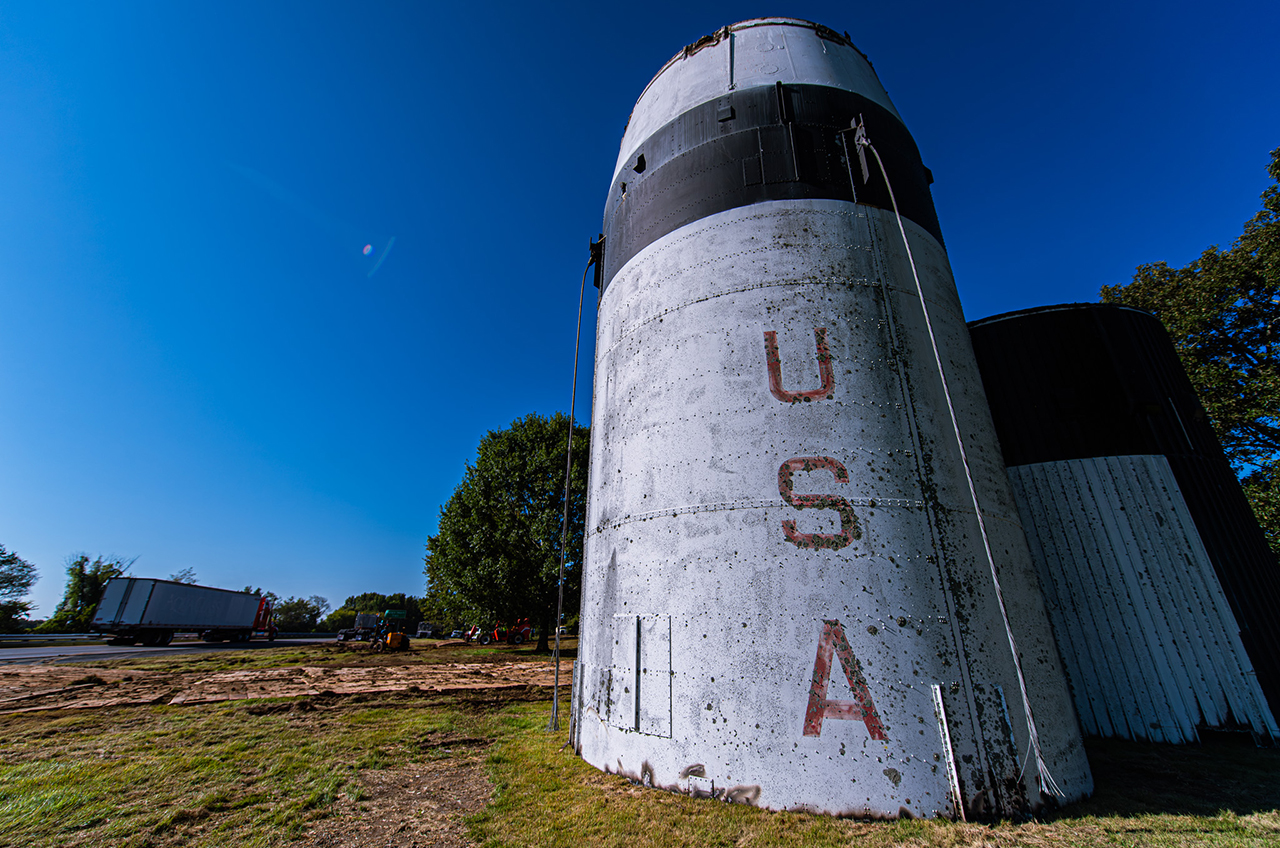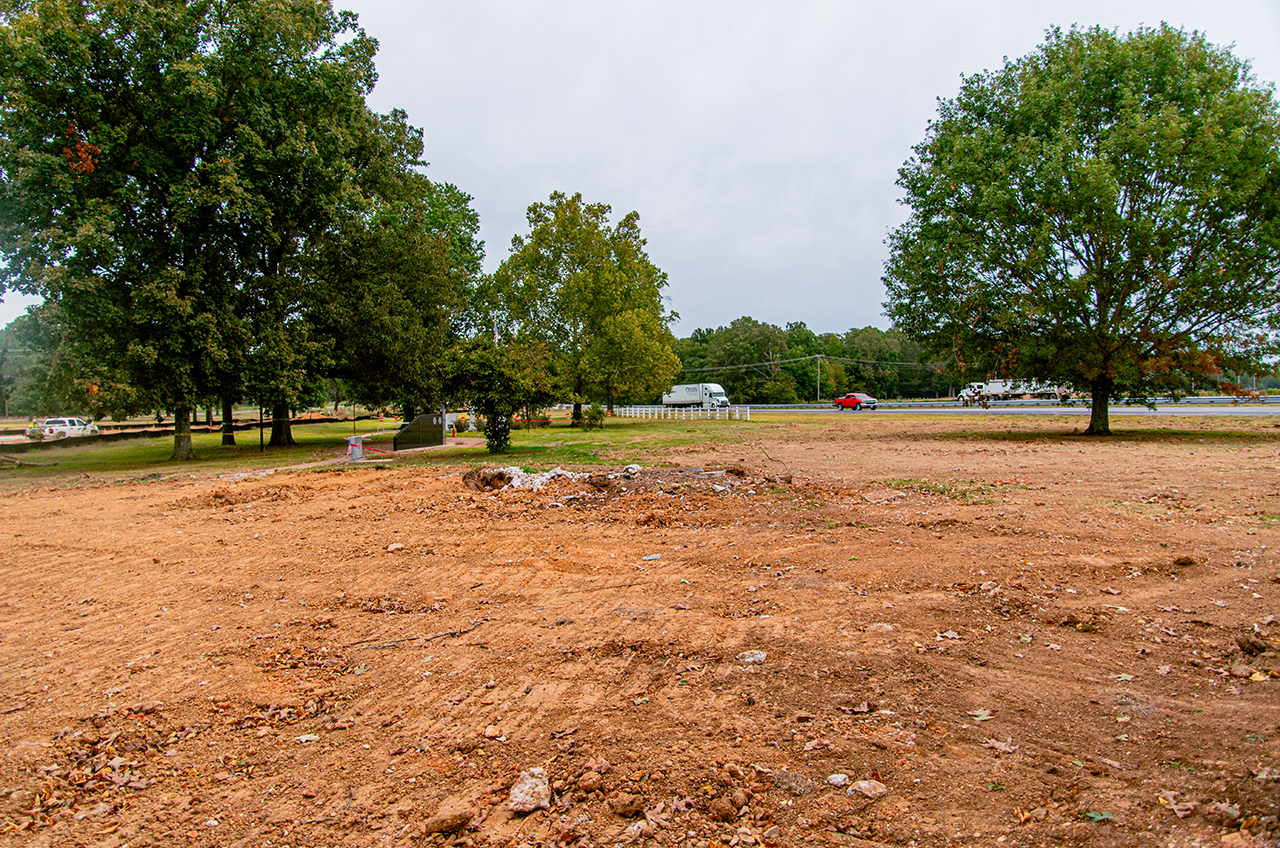Apollo artifacts: NASA salvages parts from Alabama's rest stop Saturn IB rocket
No longer structurally sound, as the rocket demonstrated with a thud, it was not a total loss.

At the very end, it was the rocket that took itself down.
A local landmark that drew national attention as politicians and the public debated its fate, the Apollo-era Saturn IB rocket was in the final minutes of being laid down when its corroded metal skin gave way and it fell the last 15 feet (4.5 meters) to the ground.
Landing with a thud, it confirmed what officials at NASA's nearby Marshall Space Flight Center (MSFC) and U.S. Space & Rocket Center (USSRC) already knew: the rocket was no longer safe to remain standing at the Ardmore Welcome Center in Elkmont, Alabama.
"It was not the straps breaking, it was the structural integrity of the rocket, which is what we had been concerned about," said Robert Champion, the director of center operations at Marshall, in an interview with collectSPACE.com. "It gave way."
Related: Restoration Begins on NASA's Last Flight-Configured Saturn IB Rocket
"It" being what is called the "spider beam," an octagonal framework that held together the rocket's eight first stage propellant tanks. Exposed to the elements for 44 years, the aluminum structure eroded to the point that it was almost gone.
"If you looked at it, you would have thought it was fiberglass or something like that because it was just breaking off in flakes," said Champion. "What we were really concerned about was that that the spider beam was going to break loose and the eight tanks would have just kind of gone willy nilly as it all collapsed."
In an effort to lower the stage in one piece, binders were installed to hold the tanks together, hence it landing intact. But what if the work to lower the rocket had been delayed and the spider beam failed while the Saturn IB was still upright?
"I think it was a very timely decision," said Champion. "It might have lasted another five years without falling or it might have fallen whenever. Who knows? But I think it proved our point that it was time for it to come down because as it got to that last 15 feet, the spider beam and where they had attached the crane's cables broke through."
Salvaging the Saturn
Erected in 1979, the Saturn IB display was built up from a mix of real and mock hardware. The first (or lower) stage was flight hardware, having been test fired at MSFC seven times between late 1967 and early 1968. The upper stage was assembled from a real interstage and forward skirt mounted to a mockup body that was originally built for underwater training.
The Apollo command module was a boilerplate, but the launch escape tower that topped the 142-foot-tall (43-meter) rocket was authentic, as were the spacecraft-lunar module adapter and the instrument unit that held the avionics for the vehicle.
All of the hardware, regardless of its pedigree, was NASA property. MSFC leased the pieces to the Space & Rocket Center, a museum operated by the government of Alabama, to assemble and manage on display. The same remained true for the reverse process.
"The Space & Rocket Center was responsible for putting the vehicle on the ground and then we at NASA took back possession of it and disposed of the vehicle in the appropriate manner required by law," Champion told collectSPACE.
That does not mean, however, that the entire rocket was scrapped. While large parts were beyond saving and demolished, significant components of the display were set aside and are now being evaluated by NASA as artifacts to be offered to museums for new exhibits.
"We have salvaged the eight engines," said Champion, though he clarified that four of the first stage H-1 engines were just nozzles and lacked turbopump assemblies. "From the instrumentation unit, we have salvaged a number of the avionics boxes that were actually flight articles."
"We salvaged the launch escape tower. We saved some of the fins that were at the base of the vehicle. They were also flight hardware. And we saved the launch mounts that were on top of the concrete pedestals, although they were in pretty bad shape," Champion said.
Workers also cut out the panels that were adorned with the large "USA" markings in red lettering.
"We had a request to save those, so perhaps one of them might go back and be displayed at whatever the future rest stop display becomes," said Champion.
Breaking space news, the latest updates on rocket launches, skywatching events and more!
What goes up
Looking at the site today, just over a month after the removal was completed, there is little to no indication that a rocket once stood there. But the Ardmore rest area, which itself is closed as it undergoes a major remodel, may not be without a rocket display forever.
A state law enacted in June requires that the Saturn IB be replaced and there are a few million dollars in the state's general fund that could go towards that work. What goes up, though, is not yet known and it is not up to NASA to fund or decide.
"We have expressed to the state and the Space & Rocket Center that we will be happy to help in a consulting role for whatever they want to do and we welcome that participation," said Champion. "But it will be the state's department of tourism or some other agency that will be the lead on that and the funding source for it."
Whatever is chosen, Champion hopes it will be something built for the test of time.
"Putting a flight article back up for a long-term display is, as we've seen, not very feasible," he said. "But me, personally, I would like to see us put something back up like the vertical Saturn V that stands at the Space & Rocket Center. It was built to withstand the exposure to the elements."
Click through to collectSPACE to see more photos of parts being salvaged from the Saturn IB rocket.
Follow collectSPACE.com on Facebook and on Twitter at @collectSPACE. Copyright 2023 collectSPACE.com. All rights reserved.

Robert Pearlman is a space historian, journalist and the founder and editor of collectSPACE.com, a daily news publication and community devoted to space history with a particular focus on how and where space exploration intersects with pop culture. Pearlman is also a contributing writer for Space.com and co-author of "Space Stations: The Art, Science, and Reality of Working in Space” published by Smithsonian Books in 2018.
In 2009, he was inducted into the U.S. Space Camp Hall of Fame in Huntsville, Alabama. In 2021, he was honored by the American Astronautical Society with the Ordway Award for Sustained Excellence in Spaceflight History. In 2023, the National Space Club Florida Committee recognized Pearlman with the Kolcum News and Communications Award for excellence in telling the space story along the Space Coast and throughout the world.





